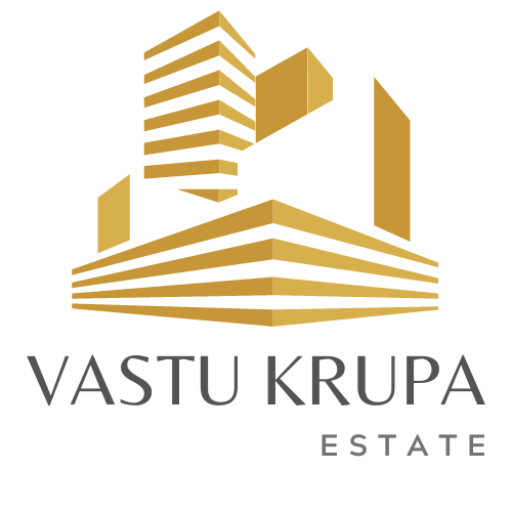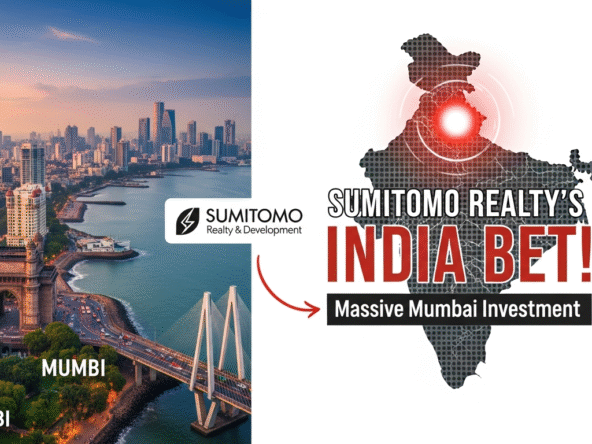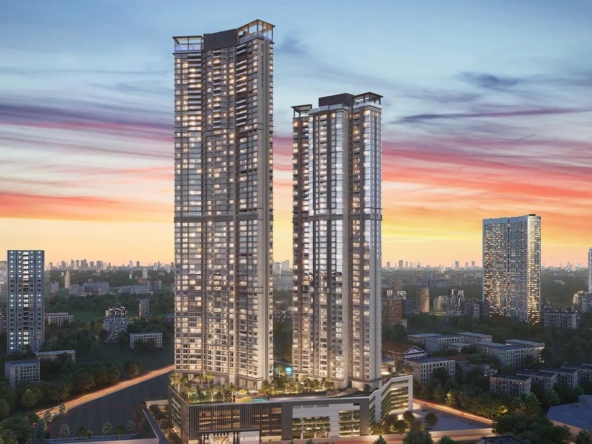Best Places to Invest Your Money As Mumbai’s urban core becomes increasingly saturated and expensive, investors are setting their sights on outlying areas within the Mumbai Metropolitan Region (MMR). Analysts note that luxury real estate is shifting beyond city limits. For example, a recent report observed that Alibag’s residential market is booming, with the town becoming an “emerging hotspot” among buyers seeking coastal retreats. In this market overview we highlight three high-potential areas near Mumbai – Alibag, the Karjat–Khopoli belt, and the Panvel/NAINA region – each of which combines new infrastructure and lifestyle appeal to attract capital investment.
Coastal Alibag: Luxury Seaside Living on the Rise
Alibag, the seaside town in Raigad district just south of Mumbai, has rapidly become a luxury real estate hub. Alibag’s appeal lies in its beaches and greenery, making it a magnet for wealthy second-home buyers and vacation-property investors. Property data show Alibag’s land values have roughly doubled in the past five years, and average housing prices jumped about 13.8% in 2024 (to ~₹9,860 per sq. ft.). These gains have been driven by massive connectivity improvements: the new Atal Setu bridge (Mandwa road) already slashes travel to Mumbai, and the upcoming Karanja–Revas (Uran–Alibag) bridge will further cut travel time. In fact, the 10.25 km Karanja–Revas project is expected to reduce the distance from Uran (JNPT port area) to Alibag from 70 km to about 30 km, enabling a one-way trip of roughly 30 minutes. With the Navi Mumbai International Airport due by 2025 and the Mumbai–Goa highway completing the coastal route, experts say Alibag offers a blend of beach-side luxury and accessibility that bodes well for continued appreciation.
Karjat–Khopoli: Mountain Retreat & Affordable Growth
Karjat and Khopoli, in the Western Ghats 75–90 km from Mumbai, have emerged as an attractive mountain-side investment corridor. Once known for agriculture and weekend getaways, these twin towns are seeing new villa developments and gated communities aimed at city residents. Importantly, Karjat–Khopoli remains more affordable than nearby hill station markets (land rates are reportedly around one-third of Alibag or Lonavala), leaving room for high returns as growth accelerates. Connectivity improvements are coming fast: the transport authorities are adding a fourth suburban rail line between Panvel and Karjat (to be operational by 2025), doubling capacity on that corridor. Central Railway notes this will “greatly improve” links between the future Navi Mumbai airport and Pune, accelerating development in Karjat, Panvel and the region. The Panvel–Karjat–Khopoli route is already an approved priority under Mumbai’s transport master plan, further signaling the area’s growth potential. Taken together, Karjat–Khopoli offers a scenic lifestyle with an improving transportation backbone – a combination that market watchers say will drive strong demand and price gains in the coming years.
Panvel & Navi Mumbai: Airport-Driven Expansion
The Navi Mumbai periphery – especially Panvel and the upcoming NAINA (Navi Airport Influence Notified Area) – is another key frontier for investors. Panvel has already matured as a Navi Mumbai town, but the opening of the new Navi Mumbai International Airport (NMIA) is poised to launch a further expansion wave. Infrastructure projects are knitting this area ever closer: for instance, the Virar–Alibag multi-modal corridor (Phase I approved) will link Vasai and Alibag via Panvel, tying Panvel directly to the JNPT port and the Mumbai suburbs. On the rail side, additional suburban tracks between Panvel and Karjat (under MUTP-3) will connect Panvel–Karjat into the Mumbai suburban network, effectively bringing Panvel and the airport into the fast-commute sphere of Pune and Mumbai. In short, with the airport and these arterial links on the way, Panvel and surrounding nodes (Uran, Khopoli, Rasayani) can expect sustained buyer interest. Even now, real estate analysts note that Navi Mumbai’s prices are supported by the airport-driven demand, and that these areas are on investors’ radar as the next growth engine.
Infrastructure & Lifestyle Drivers: Key Growth Catalysts
The trends above are underpinned by several major infrastructure and lifestyle shifts:
- New Road and Rail Links: Projects like the Karanja–Revas bridge (Uran–Alibag), the Virar–Alibag expressway (north–south corridor through Panvel, Phase I), and the Panvel–Karjat rail corridor expansion are cutting travel times and opening new commuter zones.
- Navi Mumbai International Airport: The upcoming NMIA (opening ~2025) is dramatically raising the profile of the entire Navi–Panvel belt (including Khopoli and Rasayani) as the city’s new gateway, catalyzing township and commercial projects.
- Lifestyle Shifts: Post-pandemic, many professionals are seeking homes with open space outside the city. Buyers now want “clean air and private gardens,” and interest in plot-based homes and villas has jumped. In effect, land investments now offer both capital appreciation and the end-use of a personal home – a dual appeal drawing buyers who might otherwise stay in city apartments.
- Limited Supply: Much of the surrounding land is constrained by terrain, coastal-zone regulations, or lack of access. With finite land available for development in these corridors, prices have room to rise as demand grows.
Taken together, these factors suggest demand for land around Mumbai will remain strong. Observers point out that early buyers in markets like Panvel and Karjat have seen multi-fold returns, and that new hotspots like Alibag are following suit. For investors and real estate professionals, the coastal Alibag region, the Karjat–Khopoli mountain belt, and the expanding Navi Mumbai/Panvel hinterland currently represent some of the best places to invest your money near Mumbai. Each offers a blend of connectivity improvements, lifestyle appeal, and upside potential that together make them highly attractive for long-term capital appreciation.
Sources: Recent industry reports and news articles on Maharashtra’s real estate market and infrastructure projects.





